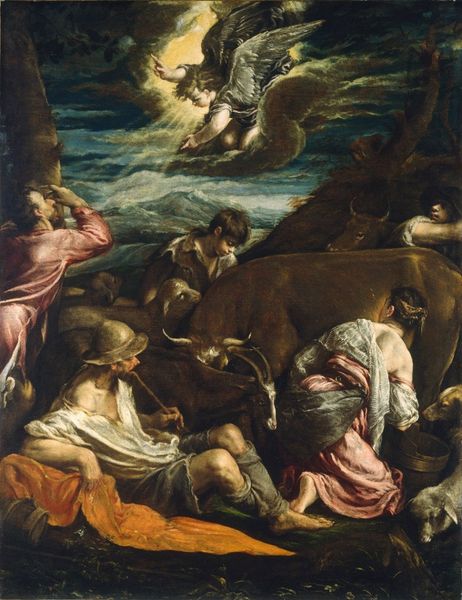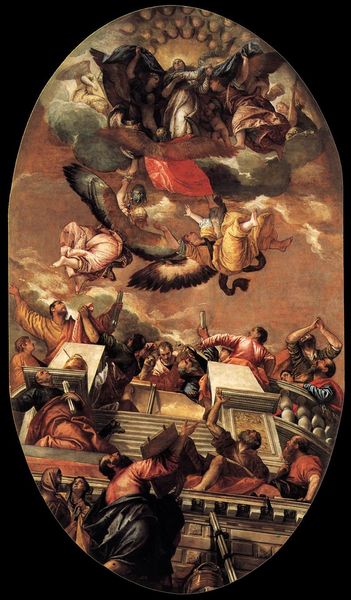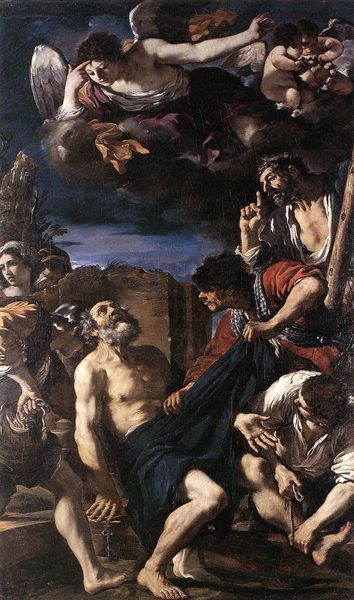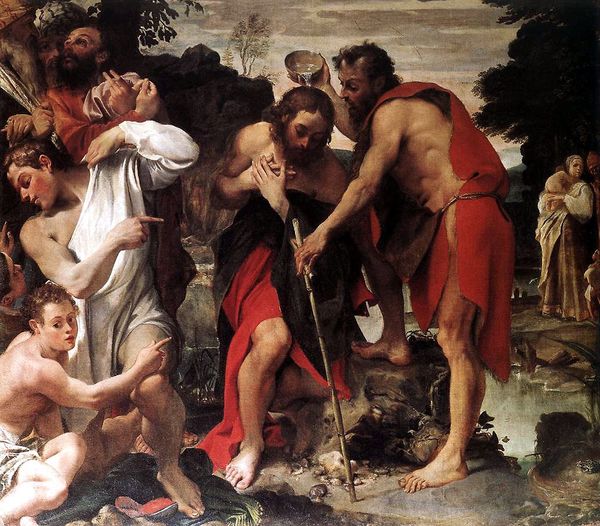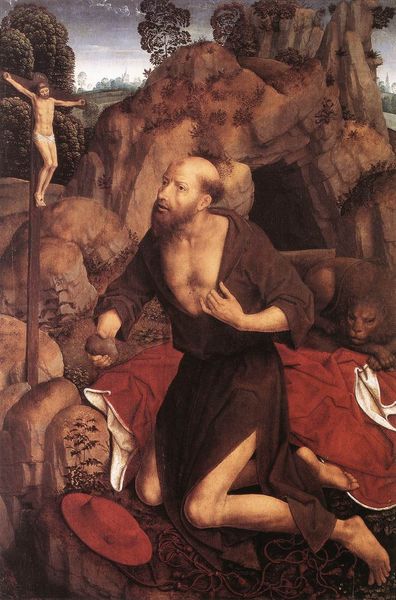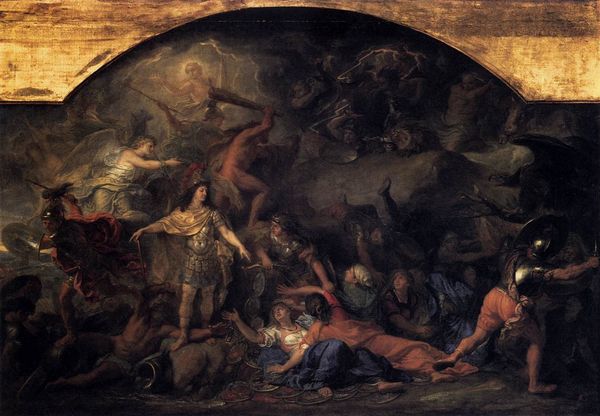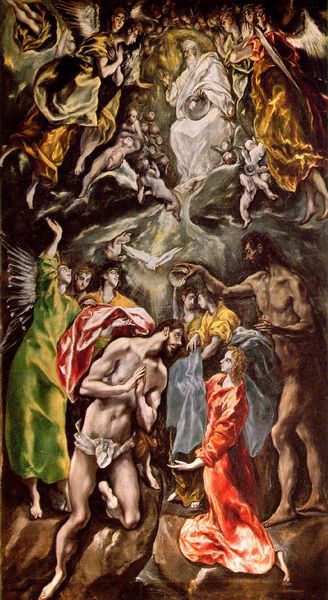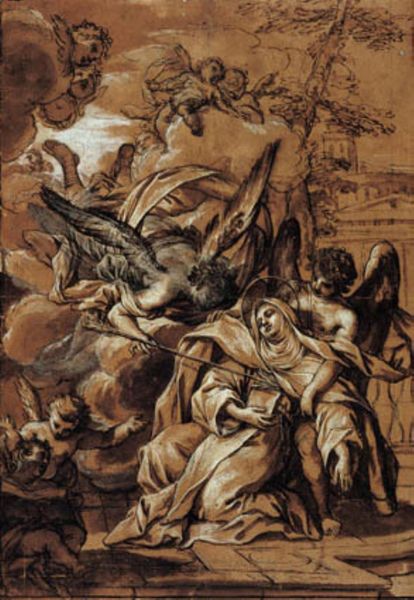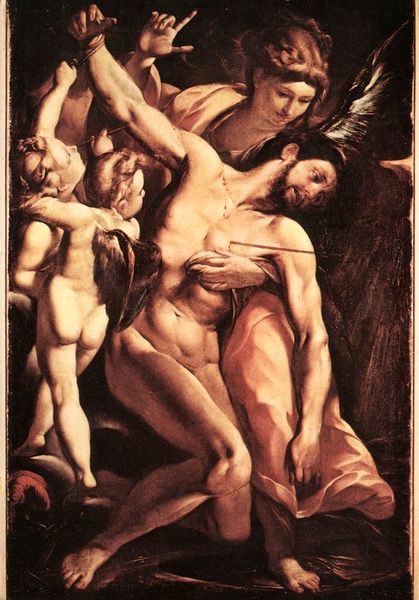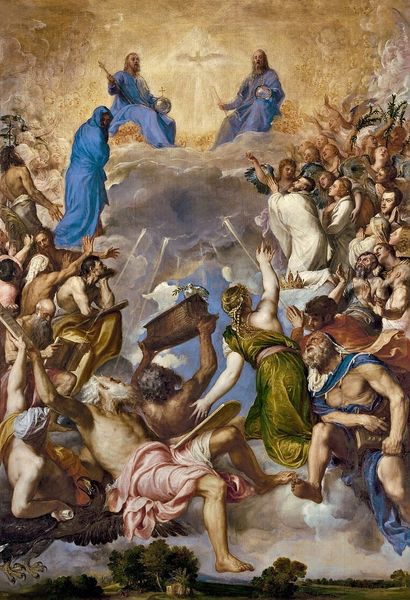
painting, oil-paint
#
allegory
#
baroque
#
painting
#
oil-paint
#
charcoal drawing
#
figuration
#
oil painting
#
christianity
#
mythology
#
history-painting
#
italian-renaissance
Dimensions: 50 x 34 cm
Copyright: Public domain
Curator: What strikes me first about Annibale Carracci’s “The Temptation of St. Anthony Abbot,” painted around 1597 and housed here at the National Gallery, is how dynamic and emotionally charged the composition appears. It's chaos beautifully contained within a frame. What's your immediate impression? Editor: "Chaos" is the right word. My eye is immediately drawn to the flurry of grotesque figures clawing at St. Anthony, the dramatic lighting, and the overall sense of unease. It's a powerful visualization of internal and external struggle, playing on notions of saintly piety and earthly vices. The raw emotion almost feels performative in its intensity. Curator: It’s a Baroque characteristic, certainly! We can't overlook Carracci’s place within the development of Baroque painting. The piece signals a shift in the Italian Renaissance, toward more movement and dramatic tension. Saint Anthony, as a subject, becomes a vessel through which Carracci and his contemporaries grapple with changing societal views. The theatrics are calculated and the art world shifts according. Editor: Exactly. Anthony becomes this figure, and his piety as an ideology becomes a space on which broader social anxieties are being played out. Look how the monstrous figures surrounding him really play into the fears and stereotypes surrounding anything deemed 'other.' Even the landscape behind him mirrors the inner turmoil of the psyche of St. Anthony. The open book lying casually on the ground near the saint hints at knowledge but feels lost in this moment of internal struggle. Curator: Note also, it’s important that we view art within its institutional contexts; and during this period, the church’s patronage played a pivotal role in shaping the art. Carracci was a shrewd artist working for those powerful institutions to visualize these important teachings through a highly crafted and aestheticized product. The emotional power and visceral energy made his commissions accessible to a wider audience that further bolstered support for his patrons and teachings. Editor: The composition emphasizes that battle between what is seen as good and evil, further shaped through institutional needs of the church; what I wonder is if contemporary views consider how harmful that simple good/evil binary can be in shaping oppressive societal attitudes toward those viewed as monstrous "others" rather than simply looking to that good/evil binary to establish saintly character? Curator: It offers, perhaps, a complex meditation not only on inner strength but, perhaps, our responsibilities as a culture. It is that ambiguity and institutional context that ensures continued engagement for us now. Editor: I agree. It is in these nuanced spaces within art history, at the crossroads of historical practice and present understanding, that an artwork's real value exists. It isn’t fixed or frozen in time, it continues to teach and offer critical viewpoints from centuries later.
Comments
No comments
Be the first to comment and join the conversation on the ultimate creative platform.
